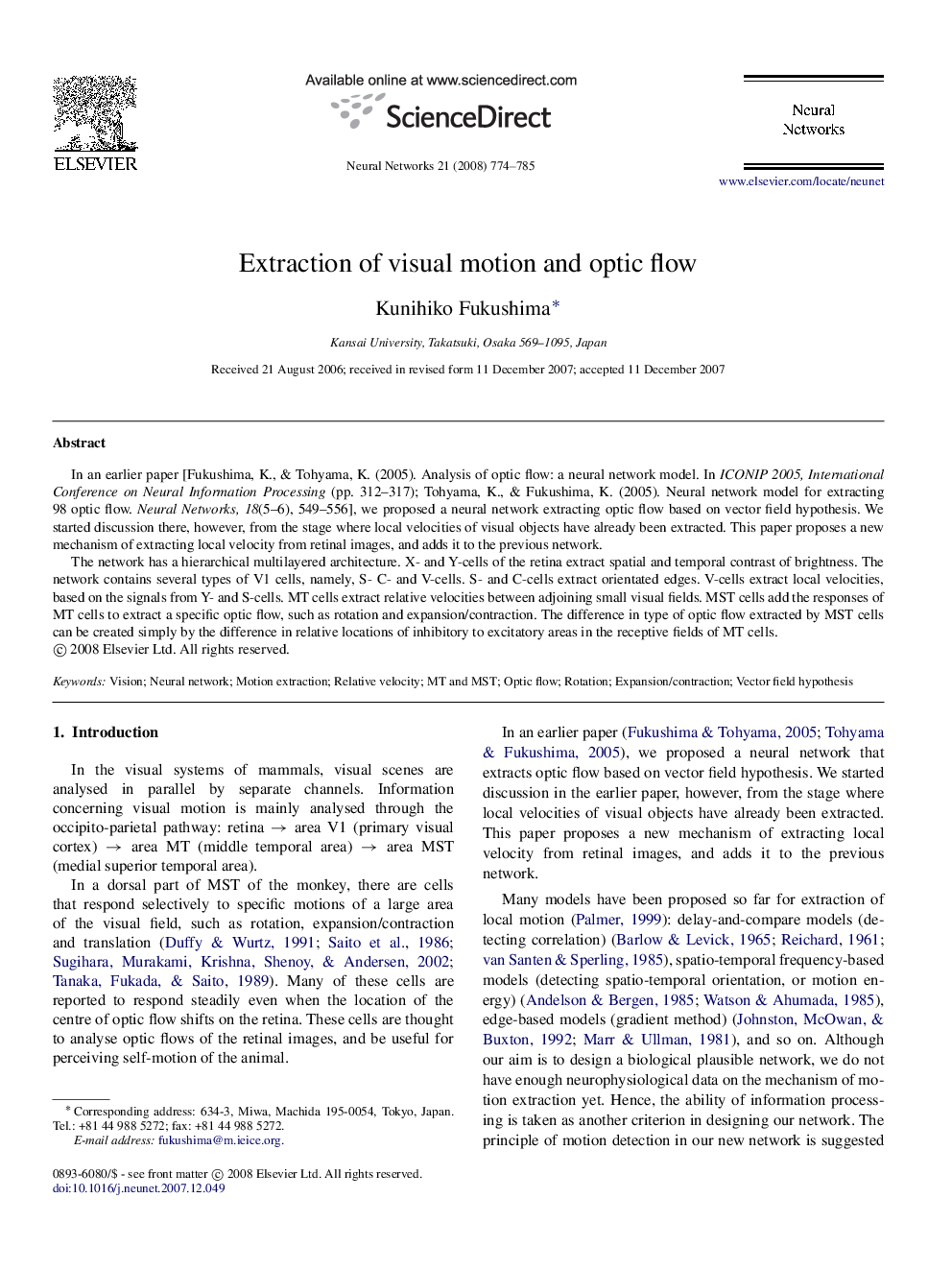| Article ID | Journal | Published Year | Pages | File Type |
|---|---|---|---|---|
| 407689 | Neural Networks | 2008 | 12 Pages |
In an earlier paper [Fukushima, K., & Tohyama, K. (2005). Analysis of optic flow: a neural network model. In ICONIP 2005, International Conference on Neural Information Processing (pp. 312–317); Tohyama, K., & Fukushima, K. (2005). Neural network model for extracting 98 optic flow. Neural Networks, 18(5–6), 549–556], we proposed a neural network extracting optic flow based on vector field hypothesis. We started discussion there, however, from the stage where local velocities of visual objects have already been extracted. This paper proposes a new mechanism of extracting local velocity from retinal images, and adds it to the previous network.The network has a hierarchical multilayered architecture. X- and Y-cells of the retina extract spatial and temporal contrast of brightness. The network contains several types of V1 cells, namely, S- C- and V-cells. S- and C-cells extract orientated edges. V-cells extract local velocities, based on the signals from Y- and S-cells. MT cells extract relative velocities between adjoining small visual fields. MST cells add the responses of MT cells to extract a specific optic flow, such as rotation and expansion/contraction. The difference in type of optic flow extracted by MST cells can be created simply by the difference in relative locations of inhibitory to excitatory areas in the receptive fields of MT cells.
